Volcano
A volcano is commonly defined as a vent or fissure in the crust of a planetary-mass object, such as Earth, that allows hot lava, volcanic ash, and gases to escape from a magma chamber below the surface.[2][5][6] Large eruptions can affect atmospheric temperature as ash and droplets of sulfuric acid obscure the Sun and cool Earth's troposphere.[14] At the mid-ocean ridges, two tectonic plates diverge from one another as hot mantle rock creeps upwards beneath the thinned oceanic crust.[16][2] Hotspots are volcanic areas thought to be formed by mantle plumes, which are hypothesized to be columns of hot material rising from the core-mantle boundary.Volcanic fissure vents are generally found at diverging plate boundaries, they are flat, linear fractures through which basaltic lava emerges.Most cinder cones erupt only once and some may be found in monogenetic volcanic fields that may include other features that form when magma comes into contact with water such as maar explosion craters and tuff rings.Based on satellite images, it has been suggested that cinder cones might occur on other terrestrial bodies in the Solar system too; on the surface of Mars and the Moon.[28][29][30][31] Stratovolcanoes are tall conical mountains composed of lava flows and tephra in alternate layers, the strata that gives rise to the name.The combination is deadly, promoting explosive eruptions that produce great quantities of ash, as well as pyroclastic surges like the one that destroyed the city of Saint-Pierre in Martinique in 1902.[33] A supervolcano is defined as a volcano that has experienced one or more eruptions that produced over 1,000 cubic kilometres (240 cu mi) of volcanic deposits in a single explosive event.A supervolcano can produce devastation on a continental scale, and severely cool global temperatures for many years after the eruption due to the huge volumes of sulfur and ash released into the atmosphere.Pillow lava is a common eruptive product of submarine volcanoes and is characterized by thick sequences of discontinuous pillow-shaped masses which form underwater.Over time, the formations created by submarine volcanoes may become so large that they break the ocean surface as new islands or floating pumice rafts.An oceanographic research campaign in May 2019 showed that the previously mysterious humming noises were caused by the formation of a submarine volcano off the coast of Mayotte.A large number of minor and trace gases are also found in volcanic emissions, for example hydrogen, carbon monoxide, halocarbons, organic compounds, and volatile metal chlorides.[69] Through natural processes, mainly erosion, so much of the solidified erupted material that makes up the mantle of a volcano may be stripped away that its inner anatomy becomes apparent.[84] Vesuvius was described by Roman writers as having been covered with gardens and vineyards before its unexpected eruption of 79 CE, which destroyed the towns of Herculaneum and Pompeii.To help prevent people from falsely believing they are not at risk when living on or near a volcano, countries have adopted new classifications to describe the various levels and stages of volcanic activity.Volcanic gases can reach the stratosphere, where they form sulfuric acid aerosols that can reflect solar radiation and lower surface temperatures significantly.[93] The 1815 eruption of Mount Tambora created global climate anomalies that became known as the "Year Without a Summer" because of the effect on North American and European weather.[99] Volcanic ash and weathered basalt produce some of the most fertile soil in the world, rich in nutrients such as iron, magnesium, potassium, calcium, and phosphorus.[101] Many volcanoes near human settlements are heavily monitored with the aim of providing adequate advance warnings of imminent eruptions to nearby populations.[102] The diversity of volcanoes and their complexities mean that eruption forecasts for the foreseeable future will be based on probability, and the application of risk management.[101] Citizens who may be concerned about their own exposure to risk from nearby volcanic activity should familiarize themselves with the types of, and quality of, volcano monitoring and public notification procedures being employed by governmental authorities in their areas.[105] Earth's Moon has no large volcanoes and no current volcanic activity, although recent evidence suggests it may still possess a partially molten core.However, radar sounding by the Magellan probe revealed evidence for comparatively recent volcanic activity at Venus's highest volcano Maat Mons, in the form of ash flows near the summit and on the northern flank.[119] Volcanoes are not distributed evenly over the Earth's surface but active ones with significant impact were encountered early in human history, evidenced by footprints of hominina found in East African volcanic ash dated at 3.66 million years old.Examples are: (1) the stories in the Athabascan subcultures about humans living inside mountains and a woman who uses fire to escape from a mountain,[121]: 135 (2) Pele's migration through the Hawarian island chain, ability to destroy forests and manifestations of the god's temper,[122] and (3) the association in Javanese folklore of a king resident in Mount Merapi volcano and a queen resident at a beach 50 km (31 mi) away on what is now known to be an earthquake fault that interacts with that volcano.[125] By 65 CE, Seneca the Younger proposed combustion as the cause,[125] an idea also adopted by the Jesuit Athanasius Kircher (1602–1680), who witnessed eruptions of Mount Etna and Stromboli, then visited the crater of Vesuvius and published his view of an Earth in Mundus Subterraneus with a central fire connected to numerous others depicting volcanoes as a type of safety valve.[127][better source needed] In 1650, René Descartes proposed the core of Earth was incandescent and, by 1785, the works of Decartes and others were synthesized into geology by James Hutton in his writings about igneous intrusions of magma.


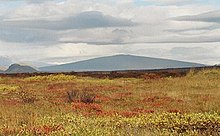



- Large magma chamber
- Bedrock
- Conduit (pipe)
- Base
- Sill
- Dike
- Layers of ash emitted by the volcano
- Flank
- Layers of lava emitted by the volcano
- Throat
- Parasitic cone
- Lava flow
- Vent
- Crater
- Ash cloud


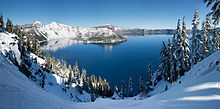






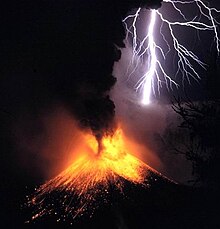





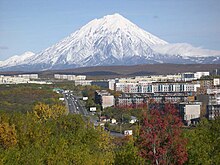



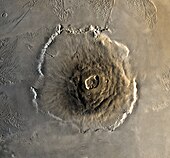
Volcano (disambiguation)Volcanic (disambiguation)Augustine Volcanoplanetary-mass objectvolcanic ashmagma chambertectonic platesdivergingconvergingmid-ocean ridgeMid-Atlantic RidgeRing of FireEast African RiftWells Gray-Clearwater volcanic fieldRio Grande riftdiapirscore–mantle boundarymantle plumeshotspot volcanismvolcanic islandHawaiian hotspottransform tectonic boundariesactivesulfuric acidtropospherevolcanic winterscryovolcanismcryovolcanoAeolian IslandsVulcanRoman mythologyvolcanismvolcanologyPlate tectonicslithosphereconvectionmantlepolygeneticmonogeneticDivergent boundarymid-ocean ridgesoceanic crustadiabaticpartial meltingdivergent plate boundariesseafloorBlack smokersIcelandConvergent boundarySubductionflux meltingviscoussilicacools and solidifies at depthvolcanic arcsCascade VolcanoesJapanese ArchipelagoIndonesiaHotspot (geology)HotspotsHawaiian IslandsSnake River PlainYellowstone CalderaYellowstone hotspotflood basaltsaulacogenalkali lavacarbonatitesTypes of volcanoesFagradalsfjallconicalcraterlava domeslandscapeplateauslandformPuʻu ʻŌʻōKīlaueaVolcanic cratersLake Taupōmud volcanoescryovolcanoesJupiterSaturnNeptuneigneousFissure ventLakagigarVolcanic fissure ventsdiverging plate boundariesbasaltic lavalava plateauShield volcanoSkjaldbreiðureffusive eruptionsOlympus MonsSolar SystemLava domerhyoliteMount St. HelensLassen Peak1980 eruption of Mount St. Helensvolcanic coneCinder coneIzalco volcanoscoriapyroclasticsmonogenetic volcanic fieldstuff ringsflank ventsParícutinSunset CraterArizonaNew MexicoCaja del Riovolcanic fieldstratovolcanotephrastratalaccolithsparasitic conesMount FujiMayon VolcanoMount VesuviusStromboliGulf of Naples
